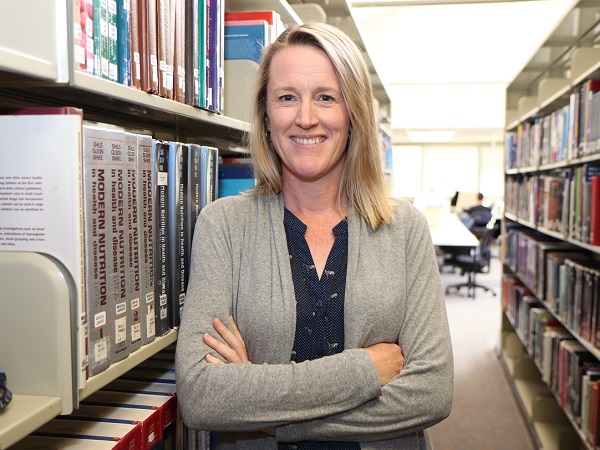
A Flinders Caring Futures Institute project examining different strategies for conducting nutritional assessments for patients in home rehabilitation has found still images taken by allied health assistants are an effective alternative to an in-person examination to assess malnutrition.
Researcher Dr Jolene Thomas says those who have been admitted to hospital are particularly vulnerable to malnutrition from inadequate food intake, which leads to weight loss and poor muscle stores.
“This is often because they are older, have complex health issues and comorbidities and potentially suboptimal support at home. We need to be able to identify people who are poorly nourished to intervene.”
Traditional assessments are done in person, where a dietitian will ask questions and conduct physical examinations of muscle and fat stores to determine whether a patient is at risk of or experiencing malnutrition. However, it is often inconvenient for older people to have to return to hospital for assessments and follow-up.
“Especially in light of COVID and the transition to telehealth and remote delivery of services, we wanted to investigate whether there were strategies to allow a dietitian to provide their nutrition assessment external to the hospital environment,” Dr Thomas explains.

Earlier research showed dietitians were capable of visiting patients at home to take still images for subsequent assessment of nutritional status. The latest research conducted by Dr Thomas and her team examined the validity of images collected by allied health assistants on the dietitian’s behalf.
“The aim of this study was to evaluate whether remote completion of the Patient-Generated Subjective Global Assessment physical examination using still images captured by allied health assistants is a valid alternative to an in-person physical examination for patients admitted to a home rehabilitation service,” Dr Thomas says.
The assessment method involves asking questions about eating behaviours, any symptoms like nausea and making a physical examination of landmarks around the body for possible deficits indicating malnutrition.
“We wanted to see if it was feasible for individuals who were already visiting people in the home, and often going there every day, to take the images for remote assessment, and whether it enabled a correct assessment,” Dr Thomas says.
At the beginning, a group of allied health assistants completed a training module where they watched presentations, conducted hands-on practice and were taught how to photograph the participants with a tablet device effectively.
“Dietitians involved in the study were then able to check whether the test images captured were suitable for nutritional assessment,” Dr Thomas says.
104 adults admitted to home rehab in southern Adelaide were engaged in the study. At the conclusion of two sampling periods in 2019 and 2020, Dr Thomas says the research team could ascertain it was a viable solution for conducting nutritional assessments of vulnerable patients.
“The findings were very encouraging, showing this method of still image collection is adequately valid, allowing dietitians to identify potential deficits.”
The feedback from the allied health assistants was positive, with those conducting the assessments seeing the value in doing the work remotely – provided adequate resourcing was made available. The response from the patients, who already had a relationship with their assistants, was also positive.
“There is potential for implementation of this method to facilitate remote nutritional assessments by dietitians. Further work is required to ensure dietitians can assess still images reliably, however,” Dr Thomas says.
The study suggests there is a growing acceptance of remote delivery of healthcare, with many older rehabilitation patients seeing the benefits of not having to visit a hospital or similar environment.
“If we can improve the nutritional status of these individuals while they’re in their home, by identifying them early and providing nutrition support, that could reduce hospital re-admission, and expedite their return to pre-morbid functioning hand-in-hand with the other therapies they are receiving,” Dr Thomas adds.
The study raises interesting questions about the potential of rolling out this method of assessment for patients in rural and regional settings and how allied health assistants could expand their scope to deliver nutritional interventions on behalf of the dietitians in the future.
Dr Thomas has been joined by Professor Michelle Miller, Ms Cassandra Lawless and Flinders Honours students on the project.

